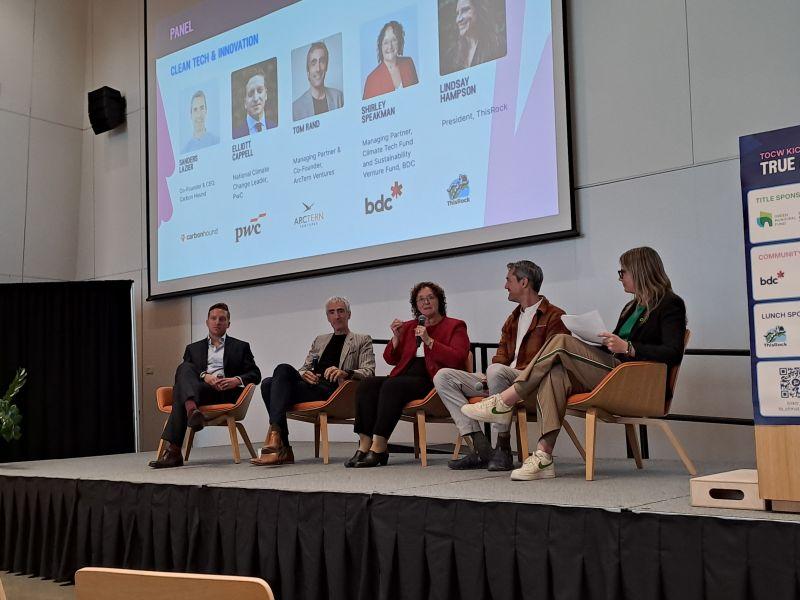
Incorporating physical climate risk into portfolio management by developing and applying climate risk matrices (CRM) should be a key consideration for investors across many varied industries.
This is according the latest report from the University of Waterloo’s Intact Centre on Climate Adaptation, titled Transitioning From Rhetoric to Action: Integrating Physical Climate Change and Extreme Weather Risk Into Institutional Investing.
The report builds on two other reports the centre had released on CRMs. Its latest profiles six CRMs:
- electricity transmission and distribution;
- hydroelectricity generation;
- wind electricity generation;
- commercial real estate;
- property and casualty insurance; and
- banking.
The risks and mitigation efforts were each developed with the advice of five to 10 chief operating officers, or those with similar experience, with a minimum of 15 years experience in their respective sectors.
“We wanted to figure out, on an industry sector basis, what the key physical climate risks were, because what we noticed was, there was a gap in the market,” Kathryn Bakos, the centre’s director of climate finance and science and co-author of the report, told SustainableBiz.
“So even though there are really great standards and disclosure frameworks that are in the market, such as the TCFD, (the) Task Force on Climate-Related Financial Disclosures, the Sustainability Accounting Standards Board (SASB), and most recently, the International Sustainability Standard (ISSB) . . . there was no real consistency.”
The Intact Centre is an applied research centre at the university founded in 2015 with a gift from Intact Financial Corporation, Canada’s largest property and casualty insurer. The report’s co-author was Blair Feldmate, the head of the centre.
Climate Risk Matrices
The other reports that built on climate risk matrices are Factoring Climate Risk into Financial Valuation and Institutional Investors Find Alpha In Climate Risk Matrices: Global Survey Finds, both issued in 2020.
One example of a CRM in the latest report involves commercial real estate. After speaking with industry experts, the centre determined the six most significant physical risks: flood, wildfire, wind, extreme heat, ice, hail and snow loading, as well as permafrost loss for Northern communities.
The report then goes into detail on risk reduction measures for each. For example, a wildfire-resistant zone within 10 metres of a property, as well as insuring gutters are clear of flammable material.
There is also a commercial real estate-based case study, based on a number of assumptions, that looks at the costs associated with adopting the risk mitigation measures now, as opposed to much later in 2028.
“We have the resources, we know actually what to do on the ground and that's not just for this report, you can look at all of our reports. So at the home community level, commercial real estate, natural infrastructure,” Bakos said. “We know what to do, whether it's a new community or an existing community, what measures need to be put into place to build resiliency against the extreme weather events that are happening now and will continue to happen into the future.”
The framework isn’t just important for the businesses themselves, but for current and potential investors and the allocation of assets.
“Whether I'm an investor allocating assets, or whether I'm a financial institution giving out loans or insurance, I can now ask that company, have you identified your risk? Or are you mitigating against your risk?” Bakos said.
These CRMs and related guidelines are in line with guidance from Canada’s financial leaders. The report cites the Office of the Superintendent of Financial Institutions’ (OSFI) guideline B-15, which states, “climate-related risks should be incorporated into internal monitoring and reporting to assess effectiveness of climate risk management.”
Next steps for the Intact Centre
Bakos noted that extreme weather events seem to be here to stay.
Regardless of what Canada and the world does to curb emissions, damages from these events are trending upward. According to the report, from 1983 to 2008, insurance losses ranged from $250 to $450 million per year. From 2009 to 2022 losses increased, averaging approximately $2 billion per year, and for 13 of those 14 years, annual losses exceeded $1 billion.
Bakos said conversations are continuing with institutions like OSFI and other investment arms since the report was made public.
“I think you can see a lot of interest in organizations because they don't have that information in the market right now . . . and actually, we don't just tell you what you should be paying attention to, we actually tell you what you should be doing,” she said. “We've done the homework for them.
"You see a lot of interest because I think the market isn't providing them with that information.”
The centre’s previous recommendations are that the CRMs be updated a minimum of every five years.
The report concludes with calls for the financial community, like the Chartered Financial Analyst Society or the SASB, to lead the charge in developing CRMs for all 77 SASB-recognized industry sectors. Or, that the CRMs should be in reach of “any portfolio manager with access to a Bloomberg terminal.”
“We've shown how the framework works, how we've developed these and we would love to work with other organizations, whether that's a SASB, whether that's ISSB, whether that's the TSX . . . to develop these across industry sectors," Bakos said.










